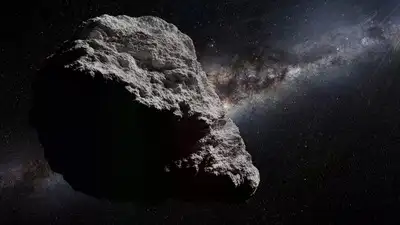ARTICLE AD BOX

When we think of space, usually planets, stars, or black holes steal the spotlight. But asteroids, which also form a crucial part, are as interesting and full of mysteries that are yet to be studied fully by science.In recent decades, missions like NASA's OSIRIS-REx and Japan’s Hayabusa have brought back samples, helping us understand these space rocks better than ever. But despite all we’ve learned, there are still many surprising things about them that most people don’t know.
Here are five of the most unique and mind-blowing facts about asteroids
The Tunguska event shows their destructive power
On June 30, 1908, a massive explosion over Siberia flattened 2,000 square kilometers of forest, yet left no visible crater. Known as the Tunguska event, it’s believed to have been caused by an asteroid or comet fragment exploding in the atmosphere.
Had it struck a populated area, the devastation would have been catastrophic. This incident is one of the important reasons behind the founding of Asteroid Day.

Representative Image
Asteroids were once called planets
When the first few asteroids, Ceres, Pallas, Juno, and Vesta, were discovered in the early 1800s, astronomers actually classified them as planets. They orbited the Sun just like the others, so the logic made sense at the time. But as more and more of these objects were found between Mars and Jupiter, it became clear they belonged to a unique category.
By the mid-19th century, the term “asteroid” became the norm. Interestingly, Ceres had some exceptional traits that is why it was reclassified as a dwarf planet in 2006.
Most asteroids live between two planets
Today, over a million asteroids have been identified, and the majority of them orbit the Sun in the space between Mars and Jupiter. This region is known as the Main Asteroid Belt. However, asteroids aren’t limited to just that area. Some travel near Earth, others remain at Jupiter’s Lagrange points, and these asteroids are referred to as Trojan asteroids.
A few asteroids even orbit closer to the Sun than Venus. Despite their small size, they’re everywhere, and scientists are discovering more with new missions.

They are not remains of a broken planet
A popular myth suggests the asteroid belt was once a planet that broke apart. But in reality, the total mass of all asteroids in the belt is only about 4% of our Moon. That’s not nearly enough to make up a planet. Instead, scientists believe these rocks are leftover building blocks from the early solar system.
Due to the powerful gravity of Jupiter, these bits and pieces never formed into a full planet and have been drifting in space ever since.
Some asteroids grow tails like comets
While comets are known for their glowing tails, some asteroids in the Main Belt have been spotted doing the same. These strange “active asteroids” occasionally release dust and gas, creating a comet-like appearance. Scientists think this may happen because they contain water ice, which evaporates when exposed to sunlight. In some cases, these could actually be ancient comets that have lost most of their icy material.
Either way, they blur the line between two very different types of space objects.



.png)
.png)
.png)
















 3 hours ago
5
3 hours ago
5









 English (US) ·
English (US) ·